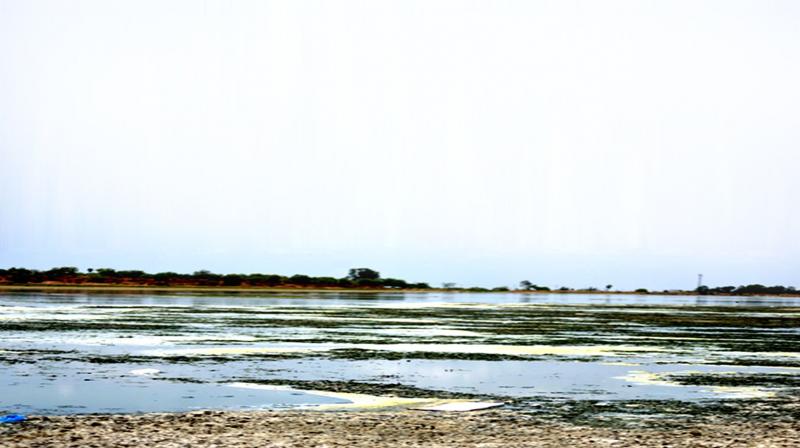Hyderabad: Isnapur lake decays as factories pour toxic waste

Hyderabad: The Isnapur lake continues to be a cesspool of chemical pollutants despite the TS Pollution Control Board (TSPCB) banning seven companies from releasing their toxic waste into the lake.
Though the pharma and chemical companies had stopped the release of effluents into the lake four months ago following the ban, the contaminated lake water has neither been drained out nor treated.
TSPCB had temporarily shut down three erring companies — Chaitanya Chloride, Venkar Chem-icals and Micro Molecules — and directed four others to regulate their operations. The seven companies now dispose of their chemical waste through the common effluents treatment plant at Patancheru. The companies continue to be monitored by the TSPCB.
While these companies paid up a total sum of Rs 6.3 lakh to the government, little has been done to revive the contaminated lake.
Isnapur has over 10,000 residents and relies on the Manjeera reservoir for drinking water. But when there is a shortage, they find it hard to manage as the groundwater is of poor quality. “This year the situation was okay. Last year we had to call in tankers,” said panchayat executive officer Sanjay Kumar.
With the Isnapur lake still remaining polluted and thereby largely unusable, this year appears to be another grim one for the villagers.
TSPCB officials say that they will wait for the seasonal rains to wash the chemicals away.
“Though we have taken all timely measures and have stopped the effluents from being released into the lake, it will take another year to revive the aquatic life,” said Mr B.V. Badhra Girish, executive engineer, Sangareddy.
According to an environmentalist, ‘washing’ away the chemicals is not enough. Oxygenated air should be pumped into the water so that it is well aerated. Only then can the lake be truly revived.
“Rainfall in a contaminated zone will make matters worse. The contamination will seep into the groundwater as well. The government must collect compensation from erring companies for restoring the lakes,” said Prof K. Purushotham Reddy. The 200 acre lake bed has now shrunk to 80 acres. He said that in November 2016, fish worth Rs 3 lakh was released into the lake in the hope that they would reap the benefits of abundant rain but the attempt was in vain with a massive fish kill.
What happen to this toxic waste?
PCB permits two ways to treat the liquid waste for pharma and chemical industries.
The company must adopt a zero liquid discharge plant technology, where chemicals are removed from the water within the plant and the water is reused within the unit.
The company must register with common effluent treatment plant at Patancheru or Jeedimetla. Waste is taken through tankers and this can be tracked on the PCB website. An official of PCB monitors this personally, if there is a failure in tracking.

